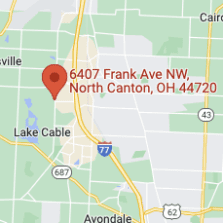The NEOES glaucoma physician team is pleased to announce the release of a new drug delivery system for the treatment and management of glaucoma, called DURYSTA. DURYSTA helps to lower eye pressure in patients with open-angle glaucoma or high eye pressure (ocular hypertension).
What is DURYSTA?
Understanding Eye Pressure in Glaucoma
Consistent eye pressure control is important in reducing the risk of progression in glaucoma according to Dr. Elizabeth Muckley. “In glaucoma, fluid builds up inside your eye, and pressure increases. As pressure increases, it can crush the optic nerve (which is what sends the light signal to your brain for interpretation). Over time, this damage to the optic nerve can lead to vision loss. Lowering pressure at all times of the day reduces the potential for damage to the vision.” Pressure can be lowered by using medicated eye drops, non-invasive laser procedures, surgery, and now DURYSTA.
How Does DURYSTA Work?
The placement of medication into different parts of the eye has been safely performed for many years to treat diabetic eye disease, macular degeneration, and cataract surgery. The use of DURYSTA glaucoma medication is another step forward in this spectrum of delivering medications into the eye to treat ocular diseases.

Durysta Implant
DURYSTA is a tiny, dissolvable implant that both Drs. Tom Chi and Matt Willett place into your eye. As DURYSTA dissolves, it slowly releases medicine in a controlled manner to help reduce high pressure inside your eye. In clinical trials, DURYSTA lowered pressure for several months and may continue to lower pressure up to a year. Complications from the procedure are low and the most common initial side effect was redness.
DURYSTA may be a substitute for one medication in the treatment of glaucoma and has the potential to reduce the cumbersome therapy of daily eye drops to control the pressure. It may be especially beneficial for patients that have trouble getting drops into their eye or for those not remembering to take their drops daily or who may be sensitive to eye medications. It is also covered by many medical insurance plans.
What can you expect after your DURYSTA Implant?
After DURYSTA is inserted into the eye, you will likely experience little to no change from before implantation. Because the DURYSTA implant is so small, you will not be able to see it in the eye. Your eye doctor, however, will be able to visualize it under the microscope.
Dr. Marcella Pipitone explains, “The goal in managing glaucoma is to stop the progression of the disease; this is done by lowering eye pressure. The DURYSTA implant will help to lower your eye pressure through a slow release of the medication into the eye. Eye pressure-lowering effects are measured as early as two weeks after implantation but may be seen sooner.”
Find A Location
Here are some things to think about when speaking to the NEOES glaucoma doctors:
- Is elevated eye pressure an issue?
- Do you understand elevated eye pressure and the risks associated with not controlling it?
- Do you have difficulty applying your eye drops every day? (Hard time using them, or forgetting?)
Call our offices to schedule an appointment with one of our glaucoma specialists today. We offer consultations for DURYSTA in each of our locations. Dr. Matthew Willet says “We are so excited to offer cutting edge developments to our patients in order to make life with glaucoma a little easier.”
Sources Cited
Durysta® (bimatoprost intracameral implant): Patient website (no date) DURYSTA® (bimatoprost intracameral implant) | Patient Website. Available at: https://www.durysta.com/.















Recent Comments